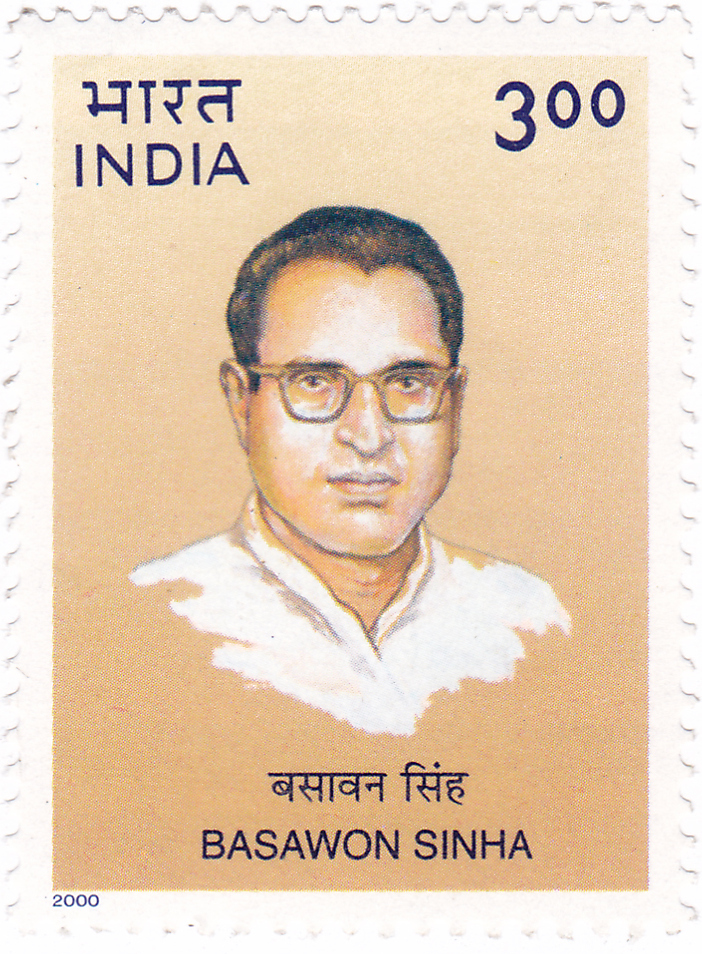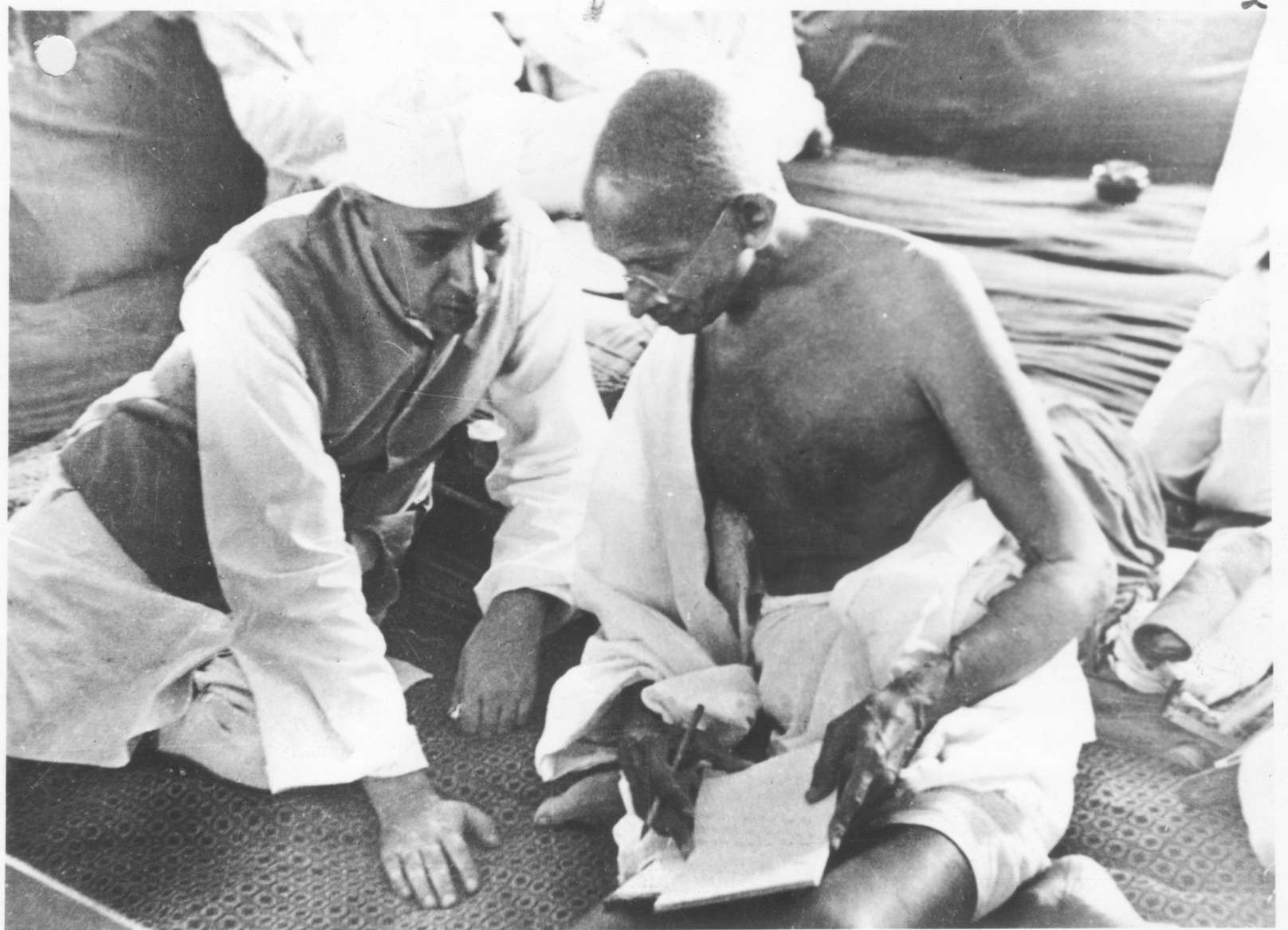|
Basawon Singh
Basawon Singh or Basawan Singh also known as Basawon Sinha, (23 March 1909 7 April 1989) was an Indian independence activist and a campaigner for the rights of the underprivileged, industrial labourers and agricultural workers. He spent a total of 18 and a half years in prisons in British India as a consequence of his support for independence and he was committed to democratic socialism. Along with Yogendra Shukla, he was a founder member of the Congress Socialist Party in Bihar. Among his revolutionary colleagues and friends he was called ''Lambad'' because of being very tall. Early life Basawon Singh was born in a poor farming family in Jamalpur (Subhai), Hajipur, Bihar on 23 March 1909. An only son, he lost his father at the age of eight. He had come from a small farmer's family. At the age of ten he ran off to Hajipur to see and hear Mahatma Gandhi. A brilliant student, he secured scholarships in both primary and middle schools. Thereafter he joined Dighi High School. ... [...More Info...] [...Related Items...] OR: [Wikipedia] [Google] [Baidu] |
Keshab Chakravarty
Keshab Chakravarty (Keshab Chakravarty) was an Indian freedom fighter and one of the youth involved in the Kakori conspiracy. Early life Keshab Chakravarthy was a student at Calcutta Medical College and a close ally of Sham Sundar Chakravarthy, who was an active member of Anushilan Samiti. Freedom struggle and Kakori Train Robbery Keshab was a prominent Indian revolutionary belonging to Hindustan Republican Association (HRA, became the Hindustan Socialist Republican Association or HSRA in 1928) that was created to carry out revolutionary activities against the British Empire in India. Keshab was a part of a group of young freedom fighters, along with Chandrashekhar Azad, Ashfaqullah Khan and Ram Prasad Bismil. To fund their need to buy guns for the revolution, they decided to rob the money belonging to the erstwhile British Indian government and transported by the guard's compartment in trains. On 8 August 1925, a group of 10 of them, including Keshab robbed a train at the ... [...More Info...] [...Related Items...] OR: [Wikipedia] [Google] [Baidu] |
Kanda, Uttarakhand
Kanda is a small historic, scenic town and tehsil in Bageshwar district, in the state of Uttarakhand, India. History Kanda was ruled by the Katyuri Kings from the 7th to the 13th century. Upon the disintegration of the Katyuris in 13th century, Kanda came under the rule of Mankoti kings of Gangoli. In the 16th century, the Chand king, Balo Kalyan Chand, invaded Mankot, the seat of Mankoti kings, and annexed Gangoli to his kingdom, the Kumaon Kingdom. Geography Kanda is located east of the district headquarters, the city of Bageshwar, and to the northwest of the city of Pithoragarh. Its surrounding landscape is characterized by mountains, terraced fields, and organic tea platforms. However, this scenic landscape is under threat, as the quarrying of soft stone is reported to have caused damage to the local ecology. Transport National Highway 309A passes through Kanda. Most of the internal transportation is via shared taxis called "Jeeps". Jeeps are available for the nearby ci ... [...More Info...] [...Related Items...] OR: [Wikipedia] [Google] [Baidu] |
Jamshedpur
Jamshedpur (, ) or Tatanagar is the largest and most populous city in Jharkhand and the first planned industrial city in India. It is a Notified Area Council and Municipal Corporation and also the headquarter of the East Singhbhum district. It is a popular tourist destination known for its forests, ancient temples and royal palaces. It was ranked as the cleanest city of India in the year 2019. It was founded by Jamsetji Tata, founder of the Tata Group, and was named after him. It was established in 1919. Jamshedpur was ranked as the cleanest city of India in 2020 by Swach Survekshan in 2020. Jamshedpur was ranked the 7th cleanest city of India in 2010. The city is also ranked as 2nd in India in terms of quality of life. Jamshedpur is the 84th fastest growing city in the world according to City Mayors Foundation. It is the headquarters of the East Singhbhum district of Jharkhand and is the 36th – largest urban agglomeration and 72nd largest city in India by population. It i ... [...More Info...] [...Related Items...] OR: [Wikipedia] [Google] [Baidu] |
Gaya, India
Gaya ( IAST: ) is a city, municipal corporation and the administrative headquarters of Gaya district and Magadh division of the Indian state of Bihar. Gaya is south of Patna and is the state's second-largest city, with a population of 470,839. The city is surrounded on three sides by small, rocky hills ( Mangla-Gauri, Shringa-Sthan, Ram-Shila, and Brahmayoni), with the Phalgu River on its eastern side. It is a city of historical significance and is one of the major tourist attractions in India. Gaya is sanctified in the Jain, Hindu, and Buddhist religions. Gaya district is mentioned in the great epics, the ''Ramayana'' and the ''Mahabharata''. It is the place where Rama, with Sita and Lakshmana, came to offer pind-daan for their father, Dasharath, and continues to be a major Hindu pilgrimage site for the pind-daan ritual. Bodh Gaya, where Buddha is said to have attained enlightenment, is one of the four holy sites of Buddhism. Gaya was chosen as one of twelve heritage ci ... [...More Info...] [...Related Items...] OR: [Wikipedia] [Google] [Baidu] |
Shahabad District
Shahabad district or Arrah district, headquartered at Arrah (now part of Bhojpur District, Bihar) was a Bhojpuri speaking district in western Bihar, India, making the western border of Bihar with Uttar Pradesh. In 1972, the district was split into two districts: Bhojpur and Rohtas. Kaimur District was carved out from Rohtas in 1991 and Buxar District from Bhojpur in 1992. Historically, the geographic area was the eastern part of the Mahajanapada Kingdom of Kashi, with the Son River separating it from Magadh. The districts in erstwhile Shahabad are as follows: * Bhojpur District headquartered at Arrah * Rohtas District headquartered at Sasaram * Kaimur District headquartered at Bhabua * Buxar District headquartered at Buxar All four above districts fall under the Patna Division along with Patna and Nalanda District. Notable persons * Kamla Persad-Bissessar, Seventh Prime Minister of Trinidad and Tobago and first woman Prime Minister of Trinidad and Tobago (great-grandfath ... [...More Info...] [...Related Items...] OR: [Wikipedia] [Google] [Baidu] |
Quit India Movement
The Quit India Movement, also known as the August Kranti Movement, was a movement launched at the Bombay session of the All India Congress Committee by Mahatma Gandhi on 8th August 1942, during World War II, demanding an end to British rule in India. After the failure of the Cripps Mission to secure Indian support for the British war effort, Gandhi made a call to ''Do or Die'' in his Quit India movement delivered in Bombay on 8 August 1942 at the Gowalia Tank Maidan. The All India Congress Committee launched a mass protest demanding what Gandhi called "An Orderly British Withdrawal" from India. Even though it was at war, the British were prepared to act. Almost the entire leadership of the Indian National Congress was imprisoned without trial within hours of Gandhi's speech. Most spent the rest of the war in prison and out of contact with the masses. The British had the support of the Viceroy's Council, of the All India Muslim League, the Hindu Mahasabha, the princely state ... [...More Info...] [...Related Items...] OR: [Wikipedia] [Google] [Baidu] |
Jayaprakash Narayan
Jayaprakash Narayan (; 11 October 1902 – 8 October 1979), popularly referred to as JP or ''Lok Nayak'' (Hindi for "People's leader"), was an Indian independence activist, theorist, socialist and political leader. He is remembered for leading the mid-1970s opposition against Prime Minister Indira Gandhi, for whose overthrow he had called for a "Bihar Movement, total revolution". His biography, ''Jayaprakash,'' was written by his nationalist friend and the writer of Hindi literature, Rambriksh Benipuri. In 1999, he was posthumously awarded the Bharat Ratna, India's highest civilian award, in recognition of his social service. Other awards include the Magsaysay award for Public Service in 1965. Early life Jayprakash Narayan was born on 11 October 1902 in the village of Sitabdiara, Ballia district, United Provinces of British India, United Provinces, British India (present-day Saran district, Saran district, Bihar, India). Sitabdiara is a large village, straddling two states ... [...More Info...] [...Related Items...] OR: [Wikipedia] [Google] [Baidu] |
Subhas Chandra Bose
Subhas Chandra Bose ( ; 23 January 1897 – 18 August 1945 * * * * * * * * *) was an Indian nationalist whose defiance of British authority in India made him a hero among Indians, but his wartime alliances with Nazi Germany and Imperial Japan left a legacy vexed by authoritarianism,* * anti-Semitism,* * * * * * and military failure.* * * * The honorific Netaji (Hindi: "Respected Leader") was first applied to Bose in Germany in early 1942—by the Indian soldiers of the ''Indische Legion'' and by the German and Indian officials in the Special Bureau for India in Berlin. It is now used throughout India. Subhas Bose was born into wealth and privilege in a large Bengali family in Orissa during the British Raj. The early recipient of an Anglocentric education, he was sent after college to England to take the Indian Civil Service examination. He succeeded with distinction in the vital first exam but demurred at taking the routine final exam, citing nationalism to be a higher ... [...More Info...] [...Related Items...] OR: [Wikipedia] [Google] [Baidu] |
Natural Science
Natural science is one of the branches of science concerned with the description, understanding and prediction of natural phenomena, based on empirical evidence from observation and experimentation. Mechanisms such as peer review and repeatability of findings are used to try to ensure the validity of scientific advances. Natural science can be divided into two main branches: life science and physical science. Life science is alternatively known as biology, and physical science is subdivided into branches: physics, chemistry, earth science, and astronomy. These branches of natural science may be further divided into more specialized branches (also known as fields). As empirical sciences, natural sciences use tools from the formal sciences, such as mathematics and logic, converting information about nature into measurements which can be explained as clear statements of the " laws of nature". Modern natural science succeeded more classical approaches to natural philosophy, usu ... [...More Info...] [...Related Items...] OR: [Wikipedia] [Google] [Baidu] |
Social Science
Social science is one of the branches of science, devoted to the study of societies and the relationships among individuals within those societies. The term was formerly used to refer to the field of sociology, the original "science of society", established in the 19th century. In addition to sociology, it now encompasses a wide array of academic disciplines, including anthropology, archaeology, economics, human geography, linguistics, management science, communication science and political science. Positivist social scientists use methods resembling those of the natural sciences as tools for understanding society, and so define science in its stricter modern sense. Interpretivist social scientists, by contrast, may use social critique or symbolic interpretation rather than constructing empirically falsifiable theories, and thus treat science in its broader sense. In modern academic practice, researchers are often eclectic, using multiple methodologies (for instance, by ... [...More Info...] [...Related Items...] OR: [Wikipedia] [Google] [Baidu] |







